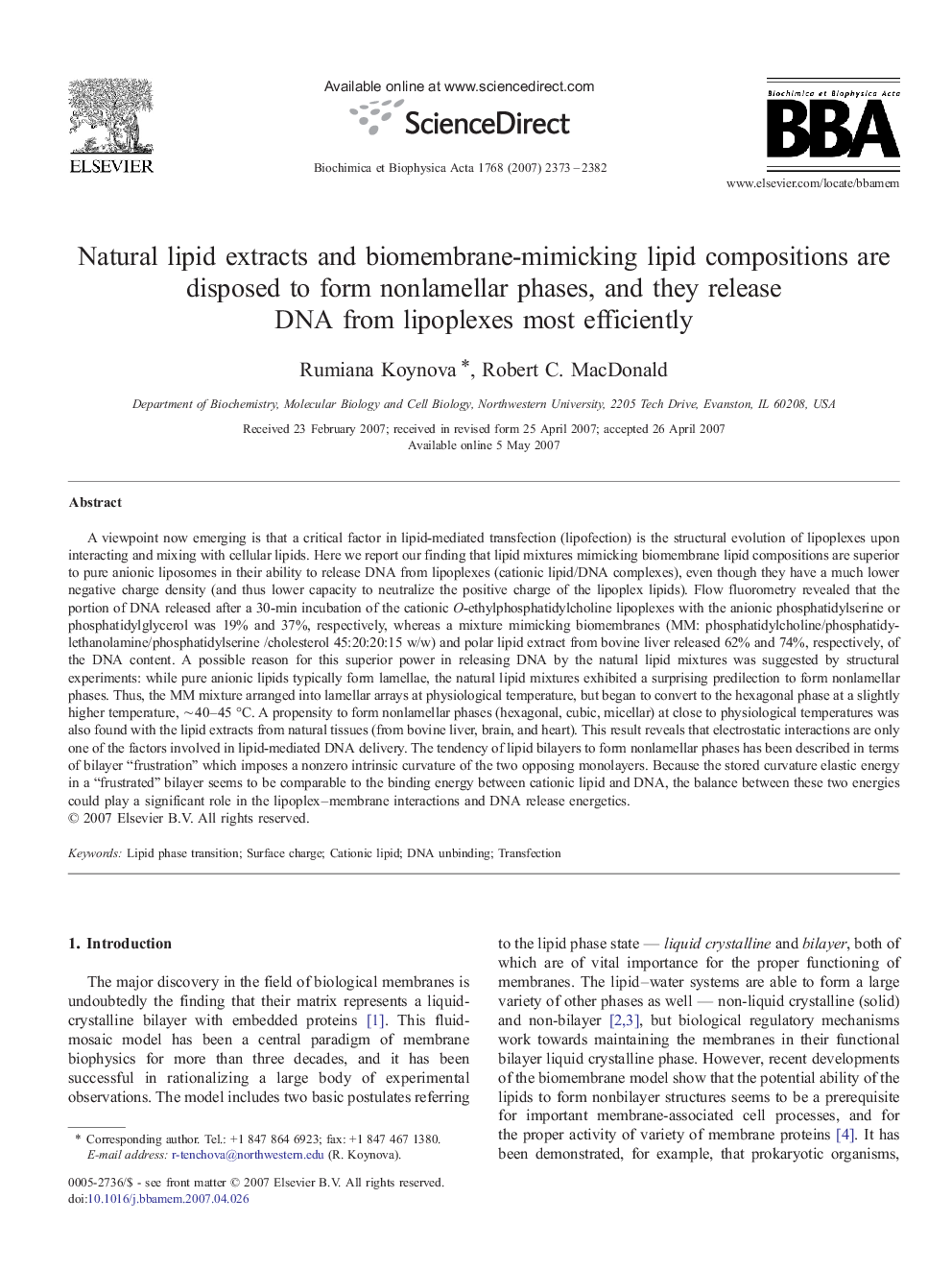| کد مقاله | کد نشریه | سال انتشار | مقاله انگلیسی | نسخه تمام متن |
|---|---|---|---|---|
| 1945659 | 1053271 | 2007 | 10 صفحه PDF | دانلود رایگان |

A viewpoint now emerging is that a critical factor in lipid-mediated transfection (lipofection) is the structural evolution of lipoplexes upon interacting and mixing with cellular lipids. Here we report our finding that lipid mixtures mimicking biomembrane lipid compositions are superior to pure anionic liposomes in their ability to release DNA from lipoplexes (cationic lipid/DNA complexes), even though they have a much lower negative charge density (and thus lower capacity to neutralize the positive charge of the lipoplex lipids). Flow fluorometry revealed that the portion of DNA released after a 30-min incubation of the cationic O-ethylphosphatidylcholine lipoplexes with the anionic phosphatidylserine or phosphatidylglycerol was 19% and 37%, respectively, whereas a mixture mimicking biomembranes (MM: phosphatidylcholine/phosphatidylethanolamine/phosphatidylserine /cholesterol 45:20:20:15 w/w) and polar lipid extract from bovine liver released 62% and 74%, respectively, of the DNA content. A possible reason for this superior power in releasing DNA by the natural lipid mixtures was suggested by structural experiments: while pure anionic lipids typically form lamellae, the natural lipid mixtures exhibited a surprising predilection to form nonlamellar phases. Thus, the MM mixture arranged into lamellar arrays at physiological temperature, but began to convert to the hexagonal phase at a slightly higher temperature, ∼ 40–45 °C. A propensity to form nonlamellar phases (hexagonal, cubic, micellar) at close to physiological temperatures was also found with the lipid extracts from natural tissues (from bovine liver, brain, and heart). This result reveals that electrostatic interactions are only one of the factors involved in lipid-mediated DNA delivery. The tendency of lipid bilayers to form nonlamellar phases has been described in terms of bilayer “frustration” which imposes a nonzero intrinsic curvature of the two opposing monolayers. Because the stored curvature elastic energy in a “frustrated” bilayer seems to be comparable to the binding energy between cationic lipid and DNA, the balance between these two energies could play a significant role in the lipoplex–membrane interactions and DNA release energetics.
Journal: Biochimica et Biophysica Acta (BBA) - Biomembranes - Volume 1768, Issue 10, October 2007, Pages 2373–2382